The Woolworths Museum
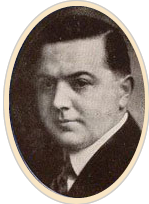
Charles Heiman Hubbard
(1888-1945)
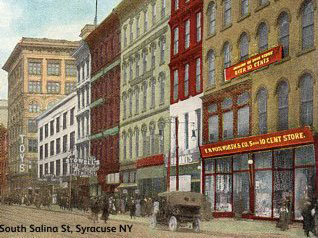
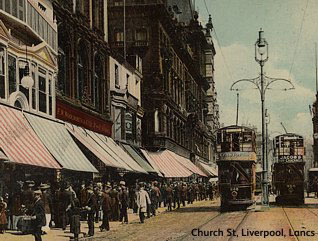
In Spring 1909 Charles Hubbard headed one of Woolworth's most successful 5 & 10¢
Stores in Syracuse, New York.
The Founder liked his high standards and wanted to copy them 3,000 miles away.....
By 1909 the F.W. Woolworth & Co. Five and Ten Cent store chain had more than 250 highly profitable stores across the United States of America. The chain's founder had established a winning formula of ultra-low prices for mass-produced goods that sold in vast quantities. To boost his buying power he had established a Syndicate of friendly rival chains who shared some of his product range, which included many items imported from European factories.
Despite the immense success, a request for volunteers to pioneer the formula overseas in the United Kingdom had largely fallen on deaf ears. Just one man had stepped forward and risen to the challenge, his own second-cousin, Fred Moore Woolworth, from the 6th Avenue Store in Manhattan. He was shortly followed by the Superintendent who controlled the stores in upstate New York, Byron Miller, who was the Line Manager of both Fred Woolworth and Charles Hubbard. The Founder had press-ganged a third manager, another Miller man, Samuel Balfour to complete the advance party.
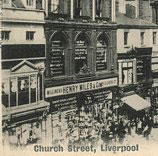
Within months the British venture had started to take shape. The pioneers had established a Company and had scouted for possible locations, choosing an upmarket former hat shop in the thriving port city of Liverpool on the north-west coast of England to become the first Threepenny and Sixpenny Store. Now they needed a man to manage the store and establish a programme to train a first generation of learners preparing to colonize the High Streets of the British Isles. Frank Woolworth wanted a good communicator and trainer who set a high standard for himself and others, was commercially astute and utterly reliable. He had no doubt that Charles Hubbard was that man, and set about persuading him to take the plunge.
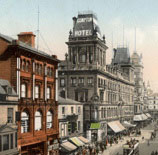
Frank was relieved that Hubbard accepted willingly. The young man held Miller and Fred Woolworth in high regard, and had wondered whether he had missed out by not volunteering.He was excited at the prospect of building a 'manager factory' for the new company, and said 'yes' without hesitation.
Less than a month later Hubbard had settled his affairs in the USA and was ready to begin in Liverpool. Work on fitting out the shop had just begun. He would need to juggle attention to the counter layout with the pressing need to find staff for the store and learners for a wave of further openings.
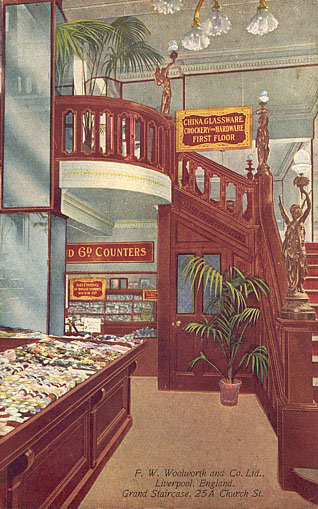
Frank had planned the store layout in detail. It absorbed the luxurious fittings left by the previous tenant, keeping the ballustrated staircase and fancy chandeliers. The extra luxury aimed to counter press comment that in the USA the products were inferior and the shopping environment was dreadful.
To dispel anti-American sentiment, Hubbard was tasked with building a pipeline of local people to man the stores, so that they could become self-sufficient quickly. Americans were to be a last resort unless they had special skills like Buying or real estate. Hubbard spread the word that he would be filling every role from counter clerk to stockman, and some would go on to be Store and Senior Managers. This put paid to zenophobic media comment about 'upstart invaders' taking British jobs.
Hubbard put the word out with signs and adverts seeking up to a hundred clerks and fifty 'smart young men' who would learn the whole operation, starting in the stockroom. The brightest and best would get stores of their own, commanding a good salary boosted by very generous commission on the profits they made. The learners must be willing to move anywhere in the British Isles, anytime they were asked.
There were plenty of applicants. As he interviewed candidates for sales assistant positions, he looked out for his 'top ten' to become the first learners for management. Some of those he chose had previous retail experience, all had the right attitude to customer service and store discipline. They were also numerate and articulate, and available to start at once in Church Street.
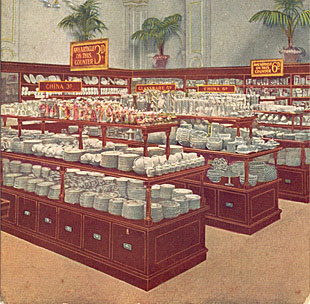 The recruits had a baptism of fire, learning the ropes in a frenzy of activity as Hubbard supervised the fine detail of the layout and displays. Deliveries had to be recorded in detail in a freight recording system. Goods had to be unpacked carefully and checked for breakage or flaws. Packing materials had to be retained. This was a traditional economy measure for Woolworth stores, which also ensured that goods could be passed on to future stores as they opened.
The recruits had a baptism of fire, learning the ropes in a frenzy of activity as Hubbard supervised the fine detail of the layout and displays. Deliveries had to be recorded in detail in a freight recording system. Goods had to be unpacked carefully and checked for breakage or flaws. Packing materials had to be retained. This was a traditional economy measure for Woolworth stores, which also ensured that goods could be passed on to future stores as they opened.
Hubbard taught his trainees that clutter and mess were unacceptable; goods had to be put away neatly in the stockroom, and carried in a stock trolley. Neither goods nor packaging must ever be put on the floor between the smart mahogany counters. Such disciplines were part of the Woolworth formula. In the future the learners would have to pass on these messages and enforce the disciplines with learners of their own.
Training for the first recruits was condensed. It had become practice in the USA for it to take two years. Learners worked each area until their boss considered them ready. Some of Hubbard's men had just three months.
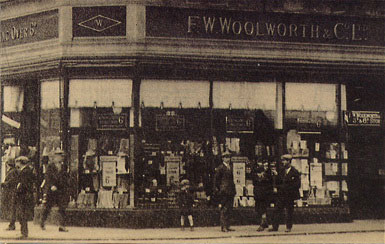
Hubbard's regime involved regular impromptu testing. Inspections, rather like a doctor's rounds, gave the chance to assess progress on the day's tasks and to spot those learners who were ready for more responsibility. Assignments aimed to ensure that each man learnt the basics of book-keeping, staff management and setting up displays. Hubbard was liberal with both praise and criticism.
The boss made it cleart that those who impressed him would be the first to get stores of their own. He told the troops: "each time I need a man I open the tank and see which fish leaps out at me." The approach promoted a rivalry between the trainees, who were encouraged to take the same spirit into store management. They fought hard to be chosen to manage the biggest and best store.
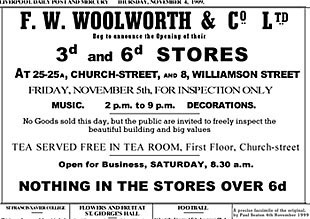
Just ten weeks after landing in Britain, Hubbard was ready. As the doors opened for a preview on the afternoon of Friday 5 November, it was clear he was the right man for the job. Every detail looked immaculate. From the starched tablecloths and sparkling cutlery in the refreshment room, to elegant, stacked displays of china and glassware, it was picture perfect. The Kitchen Shop was arranged into place settings, with neatly printed cards setting out the range and prices. Notions and knick-knacks were given similar attention on the ground floor, despite their penny prices. They were arranged neatly, all facing the same way, between glass dividers on the counter tops.
The handsome premises, formerly occupied by Henry Miles & Co., were thronged the whole time they were open, many no doubt attracted by the novel character of the business transacted. 6d is the highest price charged for any single article in the establishment, but the variety of articles obtainable is infinite. Though none were on sale, the goods were laid out ready for the commencement of business to-day, and occasioned the visitors considerable surprise in the matter of their exceptional value.
Liverpool Courier, November 6th 1909
The Founder, who had returned to headquarters in New York, was delighted by news of the opening day in Liverpool. Press coverage about the store was very positive, even if some national papers still expressed doubts about some of the product selections. He was particularly encouraged by news that a leading local merchant, Owen Owen, the proprietor of a popular local department store of the same name, had offered a lease on a property in another shopping district of Liverpool. The endorsement would help to tackle the reservations that the pioneers had found from some landlords. Miller was tasked with making arrangements to lease the property in London Road, while Hubbard was told to select "readymen" from among his learners to open the next two branches, one in Owen Owen's building in London Road, Liverpool and another in Fishergate, Preston, Both were scheduled for February 1910. The men had to be released at once to start making the arrangements.
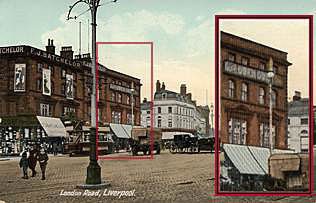 Between 1910 and 1913 Hubbard's learners dissipated far and wide, heading stores west to east along the path of the Lancashire and Yorkshire Railway in Preston, Manchester, Leeds, Hull and Middlesborough, or sent South for a second wave in Brixton, Woolwich, Bristol, Harlesden and Croydon. The foundations had been laid. Now his learners had learners of their own.
Between 1910 and 1913 Hubbard's learners dissipated far and wide, heading stores west to east along the path of the Lancashire and Yorkshire Railway in Preston, Manchester, Leeds, Hull and Middlesborough, or sent South for a second wave in Brixton, Woolwich, Bristol, Harlesden and Croydon. The foundations had been laid. Now his learners had learners of their own.
Hubbard was elected a Director in 1913, taking over the Northern District's Office in Liverpool from fellow Directors Byron Miller and John Snow, when they moved south to open a Buying Office in London. As District Manager he oversaw the store operation through a team of Superintendents in an area that spanned Ireland, Scotland and Northern England.
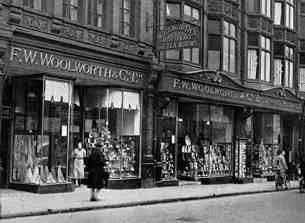
Hubbard's District grew rapidly. His Superintendents visited each store weekly and produced detailed reports about their sales, stock levels and standards. These noted any issues or opportunities. He reviewed their reports thoroughly, building a skills map for each Manager. He visited those stores which got good or bad reports, or called the Managers in for a review.
Succession planning was key. Good Managers could expect a move upwards each year, after their annual stocktake. Poor performers got rigourous retraining. Ultimately if things did not improve they could find their careers going backwards, returning to the stockroom to work their way up again.
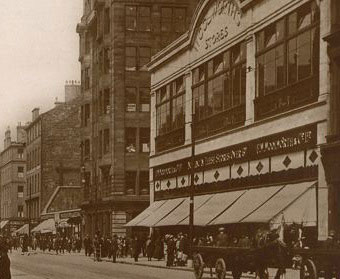
No scheme for a new store or alterations to a building within the District could go ahead without Hubbard's say-so. Much of his time was taken in meticulous reviews with the property scouts and his construction team. Forecasts were prepared detailing the anticipated sales, costs and profit from each scheme. The merchandise mix, labour and operating costs were all considered, as well as the one-off set up costs and the new rental or outlay for a freehold. If the sums added up the proposal was presented to the Company's Investment Committee.
On 31 December every store completed an inventory (annual stock count), which was used to calculate their annual sales, profit, shrinkage (stock loss) and stock on hand. The results were summarized into a 'stock book', which was sent to District Office. Hubbard reviewed every book meticuloulsly.
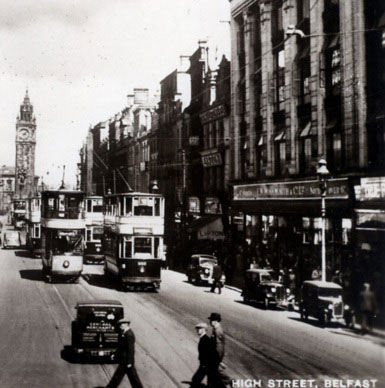
When he was ready, the boss would summon each Store Manager to attend a review of his store's performance, accompanied by his Superintendent. Hubbard examined every detail, and worked with them to build an action plan for the year ahead. As they waited to go in to his office, Managers paced the carpet anxiously! Would they be carrying out the action plan or moving to pastures new?
Those who had produced good results could expect to leave the office with the keys to a new store. Sometimes this meant relocating many miles across country. By 1921 the District stretched from Dun Loghaire in Ireland and Wolverhampton in the English West Midlands to Greenock to the North West of Glasgow. Managers could be sent to any of sixty stores.
Store Managers wives and their children were expected to 'follow the breadwinner'. Many Woolworth children attended ten schools in childhood as their dads climbed the greasy pole at the store chain.
In 1923 the chess master became a pawn himself, as Charles Hubbard was asked to transfer to headquarters in Kingsway, London WC2, to become Deputy Managing Director. This followed the unexpected death of MD Fred Moore Woolworth. The new incumbent, William Stephenson, needed Hubbard's expertise to accelerate the pace of growth. He placed his new Deputy at the helm of the influential Investment Committee.
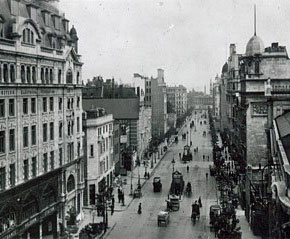
Overnight Hubbard had turned from poacher to gamekeeper. Now he had to pick apart capital proposal. He was in a unique position to do this, with detailed knowledge of every location in the Northern District. He travelled widely to build the same encyclopaedic knowledge of the branches in the south. On his visits he encountered many 'Hubbard-learners' who had risen to manage flagship stores or had become Superintendents.
Stephenson's choice of Assistant proved inspired. Hubbard collaborated well his boss, the property guru Louis Denempont and the Construction Superintendent, B.C. Donaldson. The store base base grew from 150 in 1923 when he took the role to 711 at his retirement in 1938. The quality of his financial controls is reflected in the fact that profits rose more rapidly than floor space, as the chain grew five-fold.
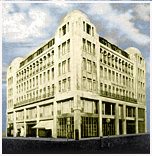
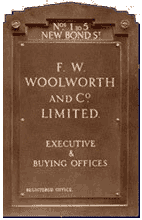 As Assistant MD, another key part of Hubbard's role was to maintain investor relations. Initially this involved liaison with stateside colleagues at Headquarters in New York, but the workload rocketed when MD Stephenson and the New York Treasurer and Senior VP Byron Miller put forward plans to go public. Much of the meticulous work to adapt the subsidiary's Memorandum and Articles of Association, to establish the new share capital arrangements and to espouse institutional investors to the share issue fell to Charles Hubbard. In parallel he also arranged a prestigious new headquarters building, suitable for a successful public company, at New Bond Street House at 1-5 New Bond Street, Mayfair, W1.
As Assistant MD, another key part of Hubbard's role was to maintain investor relations. Initially this involved liaison with stateside colleagues at Headquarters in New York, but the workload rocketed when MD Stephenson and the New York Treasurer and Senior VP Byron Miller put forward plans to go public. Much of the meticulous work to adapt the subsidiary's Memorandum and Articles of Association, to establish the new share capital arrangements and to espouse institutional investors to the share issue fell to Charles Hubbard. In parallel he also arranged a prestigious new headquarters building, suitable for a successful public company, at New Bond Street House at 1-5 New Bond Street, Mayfair, W1.
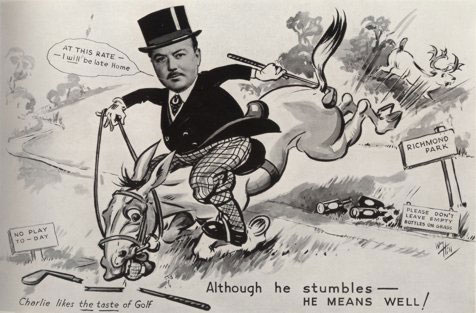
By the 1930s Hubbard had become rich. He enjoyed a bachelor lifestyle, many miles from home. His elegant apartment in London's Maida Vale was in the same block as fellow Director John Snow. Hubbard became a regular house guest at Snow's country pad, the Highfield Stud Farm, enjoying the riding and parties his friend laid on. The two often made a foursome with society ladies to go clubbing.
Charlie loved golf and promoted competitions after hours. The fairways were also his meeting room of choice. Schemes for extensions and openings were more likely to be approved if the executive behind them scheduled the review on a golf course!
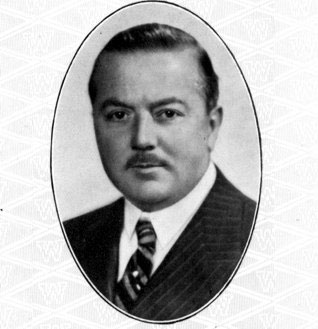
In 1936 the Chairman, William Stephenson, started to plan for his retirement. He had been a Director for twenty-seven years and would turn sixty in 1940. In the discussions that followed it emerged that Hubbard, who was his junior by eight years, planned to retire and return to the USA on his fiftieth birthday in 1938, a decade early, while he was still young enough to 'settle down'. He did not aspire to the top job. John Snow also intended to step down and wanted to relinquish his Superintendent of Buying Role at once, though he was persuaded to remain a Director. The unexpected news forced a rethink.
Louis Denempont was identified as the best candidate to take over when the time came. In preparation for the change, Stephenson announced that he would be stepping down from day-to-day management, appointing Joint Managing Directors in his place. He would continue as Chairman, taking the overview and guiding the new men as they found their feet. Hubbard's new title may have been a courtesy, to avoid an apparent snub by moving another man over his head. His duties did not change significantly. Stephenson struggled to take a back seat.
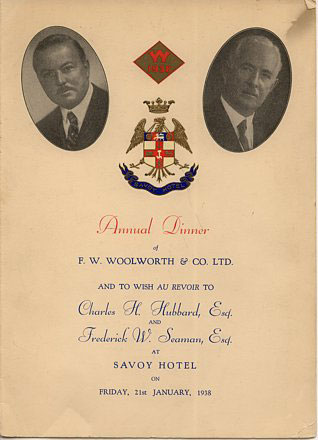
No-one begrudged Hubbard an early retirement. He had served for almost thirty years, a long way from home. He had fathered two generations of Woolworth men and had set the highest standards, reminding his 'learners' that 'cheap does not mean nasty' and they must give 'more for less'.
During his time with the firm it had grown from a single store in Liverpool to the largest chain in the United Kingdom and Ireland with 711 stores in every major High Street. Hubbard had played a pivotal role.
The Woolworth Chairman paid glowing tributes to his number two and to fellow American executive Fred Seaman (who had run the firm's distribution operation since 1910) at the F.W. Woolworth & Co. Ltd. Annual Dinner at the Savoy Hotel on 21 January 1938. Stephenson told his guests that the retailer was losing two of its great men, In Hubbard he was losing a lifelong friend of disinction.
Only fragments are known of Hubbard's life in retirement. His obituary hints that he had achieved one of his lifelong ambitious and had married after his retirement. He and wife Dorothy Hubbard paid for a new public school in his home town, backed by an endowment which still continues. They did so as an anonymous donors. His generosity only came to light in the twenty-first century. Sadly Hubbard died in a motoring accident in Nasau, Egypt where he was on holiday in 1945. Despite the traumas of the World War, many Woolworth people were stopped in their tracks at the news that such an amiable and dynamic man had been taken at just 57 years of age.
We are proud to tell the story of the man who set the standard. Rest in peace on the great fairway in the sky.
From The New Bond, Autumn 1945.
During his connection with the British Company he was directly concerned with its growth from a single store in Liverpool, to 711 stores at the time of his retirement at the end of 1937. The British Woolworth Organisation, with all its worries and thrills, but also its fascination and interest, owed much to Mr. Hubbard's genial personality, and I am sure we are all indeed very sad at the sudden loss of so charming a Woolworth personality and ex-colleague. On behalf of the Company and all Woolworth personnel, we have extended our genuine sorrow at the passing of one of the pioneers of the British Company, to Mrs. Hubbard and family.
BENJAMIN.E. UFFINDELL. (Managing Director)
Shortcuts to related content in the Woolworths Museum
1900s Gallery
US Expansion:
US Biographies:
UK Biographies:
UK beginnings:
Financing and setting up the Company
vJoin us on opening day in Liverpool
Museum Navigation